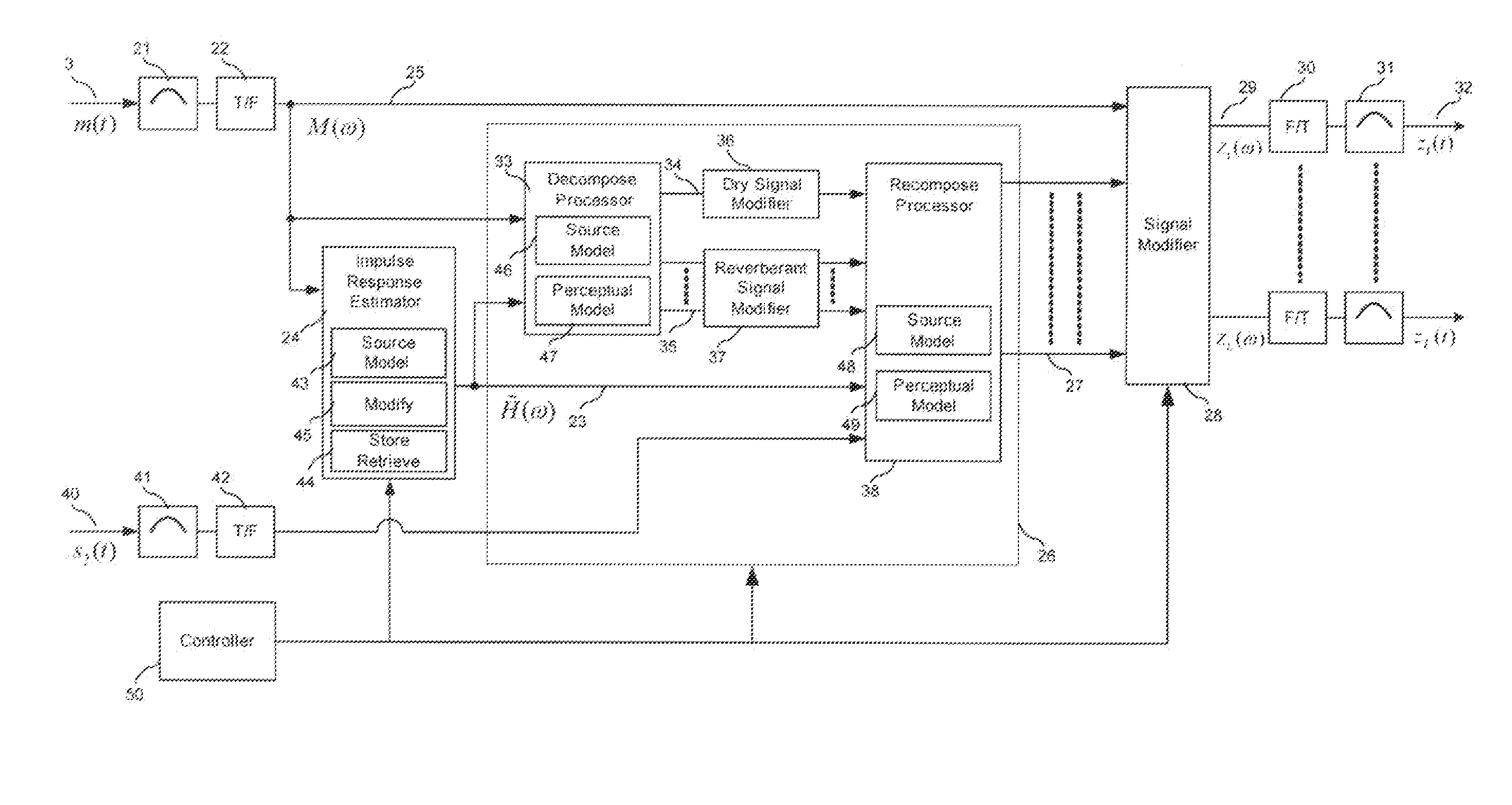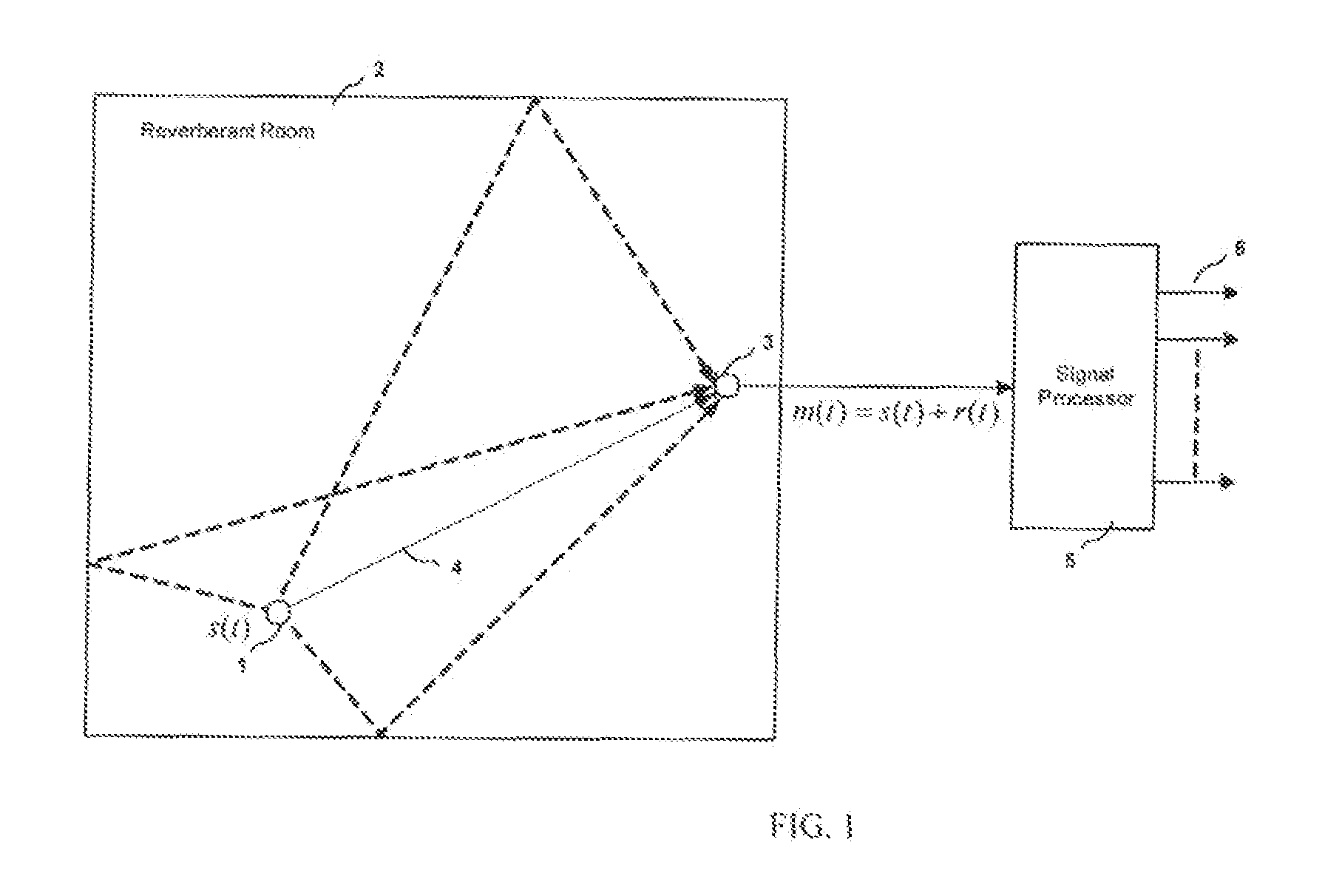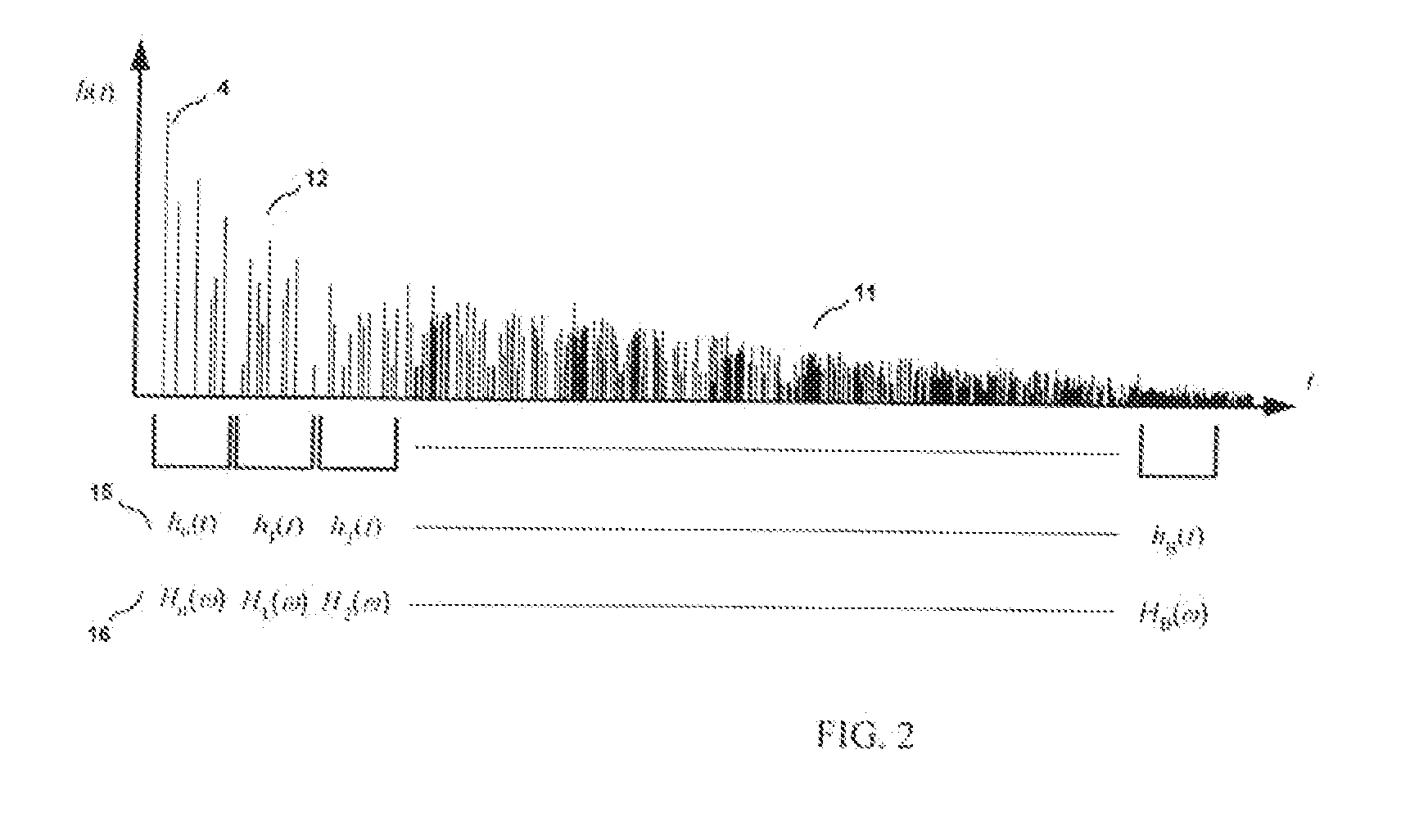Once the original dry signal has the reverberant characteristics of an
acoustic space superimposed upon it, it is extremely difficult to recover the original dry signal (or the direct signal component).
Similarly, it is extremely difficult to alter the characteristics or level of the reverberant component.
The difficulty is due in part to the fact the reverberation is dependent on the original dry signal.
Moreover, we do not typically have access to any
relevant information regarding the reverberant system.
However, one does not typically have access to the most subjectively pleasing acoustic spaces and so the reverberant component of the recording may not be as good as one would like.
That is the reverberation may not be entirely appropriate for that recording.
At present, there is not much that can be done to alter the reverberant component of the recording in this case.
However, the reverberation produced by these devices does not tend to sound natural and is unlikely to complement the reverberation that is already present in the recording.
Conversely, if the recording has too much reverberation, then there is not much that can be done presently to reduce the level of the reverberant component.
If the recording has the right amount of reverberation, but not the right characteristics, then there is not much that can be done presently to alter the characteristics of the reverberation.
In other applications even a modest amount of reverberation is not appropriate since it degrades the
clarity and intelligibility of the signal.
For example, in applications such as teleconferencing where a hands-free telephone is often used, the reverberation of the office or
conference room can have the undesirable effect of making the speech signal sound “hollow”.
In other related applications such as security, surveillance and forensics, the reverberation is highly undesirable since it can reduce the intelligibility of speech signals.
However in such situations it is typically impossible to have any control over the reverberant characteristics of the
acoustic space.
In
speech recognition systems the reverberation reduces the system's ability to correctly identify words and may thus reduce the recognition rate.
If the recognition rate becomes too low then the
speech recognition system may be rendered unusable.
Reverberation can cause unique difficulties for
hearing impaired people since the undesirable effects of the reverberation are often compounded by their hearing impairment.
The negative effects of reverberation on speech intelligibility are often more severe for people with hearing impairments.
Therefore, amplifying the signal does not help to overcome the negative effects of the reverberation.
If the location is not known, or if it is changing over time, then this approach may not work satisfactorily since the desired signal may be rejected.
Also, this approach may not be appropriate in certain applications due to the physical size of the
microphone array, the increase in the amount of hardware resources required (e.g. microphones, amplifiers, etc), and the
resultant increase in cost.
In the ADR example the recordings are often very dry since the recording or dubbing
studio is usually a carefully controlled acoustic space.
This may be quite difficult if the acoustic characteristics of the room are not directly available.
As indicated above, this is a difficult task that has not been satisfactorily resolved to date.
In one class of situations the reverberation found in an
audio signal is inappropriate in that it limits one's ability to process the signal in some way.
There are currently no means of overcoming the effects of reverberation in order to improve the performance of an audio
data reduction system.
However this modification may become audible if the direct sound component and the reverberant component no longer match each other as a result of the modification.
In another class of situations the reverberation found in a signal becomes inappropriate as a result of some
processing.
This
processing often alters the relation between the direct sound component and the reverberant component in the recording such that it is no longer appropriate.
There are currently no means of correcting the reverberant component after this
processing.
It is often not convenient or impossible to measure the acoustic characteristics of an acoustic space.
And, even if we did have access to the concert hall, we wouldn't likely be able to reproduce the acoustic conditions at the time of the recording (e.g. location of the singer and the
microphone, presence of an audience, etc.).
To date, there is no method that adequately satisfies this need.
These techniques are limited by the fact that they process both the direct sound component as well as the reverberant component.
At present, there is no satisfactory way to decompose the signal into a direct sound component and reverberant component so that they may be processed separately.
At present the number of multichannel audio recordings available is quite limited.
Conversely, there are a very large number of mono and stereo recordings available.
This is not a desirable result in some situations.
This approach is not satisfactory for several reasons.
First, the approach adds additional reverberation on top of the reverberation already present in the stereo signal.
Therefore, this approach can make the overall amount of reverberation inappropriate for that particular recording.
Moreover, the reverberation added by the artificial reverberation device is not likely to match the characteristics of the reverberation in the stereo recording.
This will make the
resultant multichannel signal sound unnatural.
There are no methods currently available that allow a signal to be decomposed into direct and reverberant components so that multichannel signals can be generated in this manner.
However inverse filtering cannot be done without precise measurements of the exact acoustic characteristics of the reverberant system.
It is not possible to use inverse filtering to recover the original dry signal from a recording in a given reverberant system using the acoustic characteristics measured from a different reverberant system.
For example, an
inverse filter derived for one location in a room is not valid for any other location in the same room.
Other problems with inverse filters are that they can be computationally demanding and they can impose a significant
delay onto the resulting signal.
This
delay may not be acceptable in many real-time applications.
There are presently no means available to adequately perform this task.
As described above there are numerous situations where the reverberation found in an audio signal is not appropriate for its intended final application.
These problems have not been satisfactorily solved to date.
 Login to View More
Login to View More  Login to View More
Login to View More 


